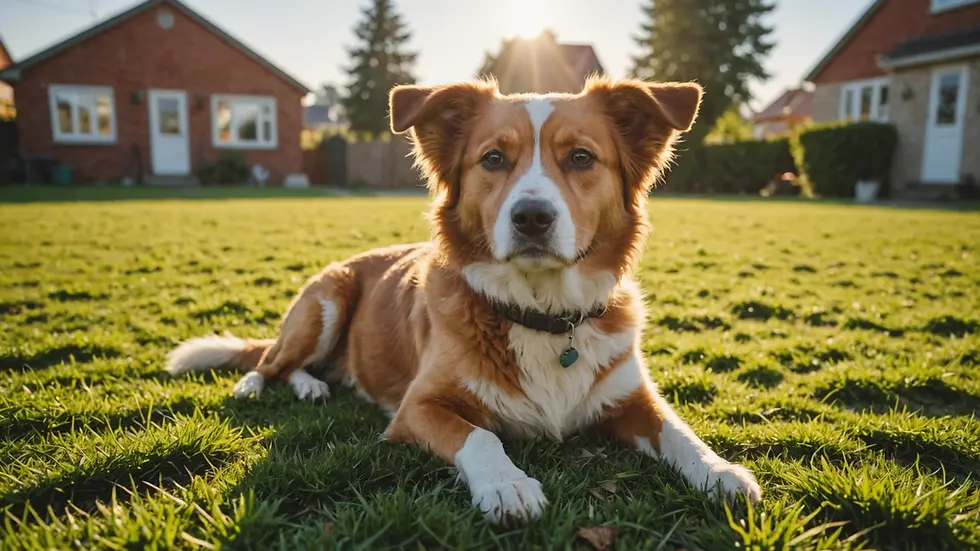Deciphering the Triggers: Unraveling the Mystery of Canine Aggression: Aggressive Dog Training
- stevenscanine
- Feb 23
- 4 min read
Understanding why dogs can display aggressive behavior is essential for pet owners, trainers, and animal enthusiasts. Aggression in canines can lead to dangerous situations, misunderstandings, and deeper issues regarding animal welfare. This blog post examines various factors contributing to canine aggression, offering insights to help prevent and manage these behaviors effectively.
What is Canine Aggression? Aggressive Dog Training
Canine aggression includes any behavior exhibited by a dog intended to threaten, harm, or intimidate another individual, whether human or animal. This can manifest in different forms, such as growling, biting, snapping, and barking. Research shows that approximately 70% of aggressive dog incidents stem from fear or anxiety. Understanding the roots of aggression is crucial for developing effective training strategies, ensuring the safety of both dogs and those around them. Aggressive Dog Training
Factors Contributing to Dog Aggression
1. Genetic Predisposition
Certain dog breeds are genetically predisposed to aggressive behavior due to their historical roles, like guard dogs. For instance, breeds such as Pit Bulls, Rottweilers, and Doberman Pinschers have reputations that often lead to misconceptions about their temperament. However, American Kennel Club data indicates that individual temperament can vary greatly within breeds. Not all dogs of a particular breed will exhibit aggression.
2. Early Socialization
A dog’s early socialization experiences significantly impact its personality and behavior as an adult. Puppies exposed to various people, animals, and environments before six months old are less likely to develop fearful or aggressive tendencies. For example, a study found that dogs that experience positive socialization during their early months reduce the risk of aggression by 50%.
3. Fear and Anxiety
Fear is a primary cause of aggression in dogs. An anxious dog may perceive a situation or person as a threat and respond aggressively. This occurs often when the dog feels cornered or overstimulated. Common scenarios include:
A dog that feels threatened by new people or unexpected loud noises.
An encounter with another dog that provokes fear, leading to a defensive reaction.
Managing fear-related aggression is essential for the welfare of the dog and for the safety of those around it.

4. Resource Guarding
Resource guarding can lead to aggressive behavior when dogs feel the need to protect their possessions, like food, toys, or resting areas. For instance, a dog exhibiting resource guarding may growl or snap when a person approaches its food bowl. Understanding the signs of resource guarding and intervening appropriately can help owners address this behavior effectively.
5. Territorial Behavior
Territorial aggression occurs when a dog believes it needs to protect its home or yard from intruders. This can include barking, growling, or attacking anyone who enters their perceived space. Statistics show that 30% of dog bites occur when a dog is protecting its territory. Recognizing a dog’s territory triggers will help owners manage and train their dogs to minimize aggressive outbursts.
6. Medical Issues
Aggression can sometimes be linked to underlying health problems. Conditions such as pain, neurological disorders, or hormonal imbalances may lead to aggressive behavior. A sudden change in behavior can be a sign of medical issues. Consulting a veterinarian is crucial before addressing aggressive behavior with training.
How to Recognize Aggressive Behavior
Recognizing signs of aggression early can prevent dangerous situations. Key signs include:
Growling: A warning that indicates discomfort.
Baring Teeth: A clear signal that a dog may bite.
Stiff Body Language: A rigid posture can indicate readiness to attack.
Snapping or Lunging: Quick movements toward a perceived threat.
Being aware of these signs allows owners to intervene effectively, ensuring safety for all parties involved.
Preventative Measures
1. Early Training and Socialization
Preventing aggression begins with proactive training and socialization. Exposing dogs to various environments, people, and animals from an early age helps them become well-adjusted adults. Training should focus on positive reinforcement methods, which build trust between the dog and its owner.
2. Understanding Body Language
Educating oneself about canine body language helps owners grasp their dog’s emotions better. By recognizing signs of stress or discomfort, owners can mitigate potentially aggressive situations.
3. Professional Help
If aggressive behaviors appear or escalate, seeking help from a professional dog trainer or behaviorist is advisable. Experts can provide tailored training plans to address specific behaviors and individual needs.
4. Creating a Safe Environment
For dogs prone to aggression, creating a safe space free from triggers can be beneficial. Strategies may include:
Setting boundaries around the house.
Using baby gates for controlled access to certain areas.
Providing a quiet retreat with their favorite toys and blankets.
A secure environment often helps dogs relax, reducing the likelihood of aggressive behavior.
Managing Aggression
1. Redirecting Behavior
When aggression is exhibited, redirecting the dog's focus to alternative behavior can be effective. Engaging in play or providing a favorite toy during moments of aggression can help. Positive reinforcement encourages acceptable behavior while decreasing aggressive tendencies.
2. Avoiding Triggers
Identifying and avoiding situations that provoke aggression is crucial. If specific stimuli—like certain people or other dogs—elicit a strong reaction, maintaining distance can be an effective approach until the dog can be calmly desensitized over time.
3. Employing Training Techniques
Working with professional trainers can introduce techniques to manage aggressive behavior:
Desensitization: Gradually exposing the dog to triggering stimuli from a safe distance.
Counter-conditioning: Associating positive experiences with previously negative stimuli.
Successfully implementing these techniques often requires patience and consistent practice but can lead to significant improvements.
4. Medication and Medical Treatment
In some cases, medication may assist with behavioral issues linked to aggression. Close collaboration with a veterinarian can determine the appropriate course of action, exploring both medical and behavioral interventions simultaneously.
Understanding Canine Behavior
Dog aggression is a complex behavior influenced by various factors, including genetics, environment, and individual experiences. By grasping the roots of aggression, pet owners and trainers can foster safer and more harmonious human-animal relationships. Through early socialization, proactive preventative measures, and professional help when needed, owners can manage and reduce aggressive tendencies effectively.
By deciphering the triggers behind canine aggression, we can create a more understanding world for our furry companions, ensuring they lead happy, fulfilled lives alongside us.







Comments